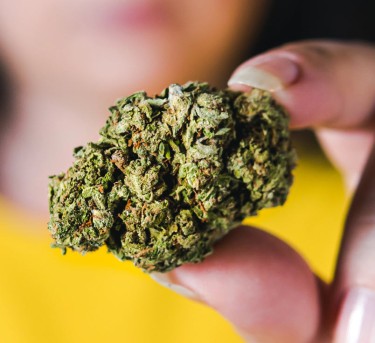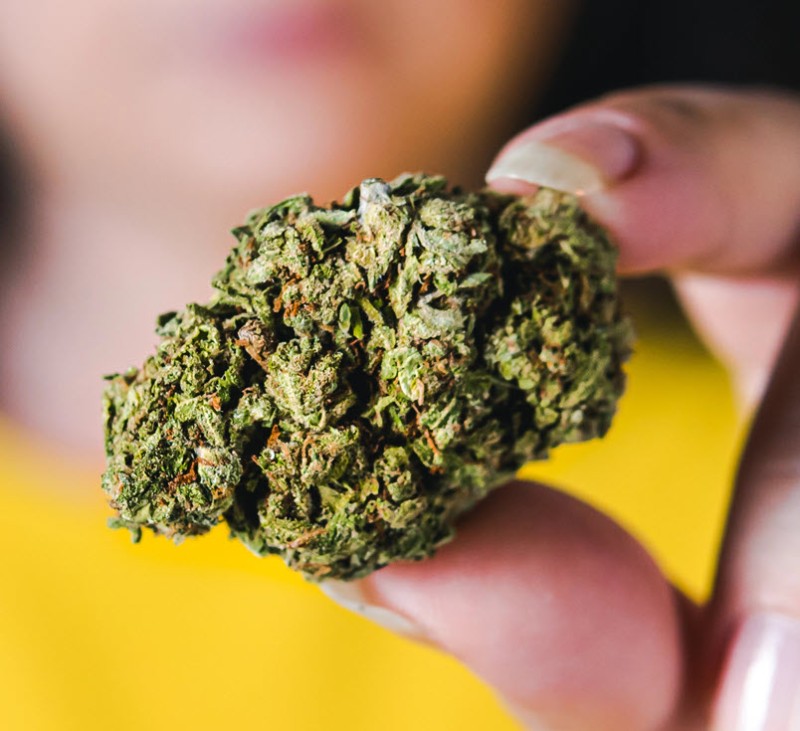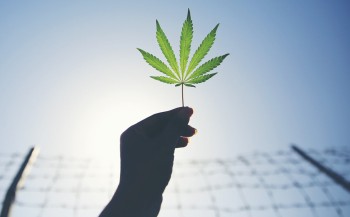
Beyond the Known: New Cannabinoid Discovery Highlights the Cost of Prohibition
Just when you think we've mapped the entire cannabis genome, nature throws us another curveball. Scientists in South Korea have recently isolated a brand new cannabinoid—cannabielsoxa—proving yet again that we've only scratched the surface of this remarkable plant's potential. But this discovery isn't just an interesting botanical footnote; it's a powerful indictment of our current approach to drug policy and research.
For decades, scientists worldwide have been hamstrung by draconian prohibition laws that have effectively placed a padlock on one of nature's most pharmacologically diverse plants. Cannabis produces hundreds of unique compounds, yet we've only studied a handful in depth. Each time researchers uncover a new cannabinoid or previously unknown medicinal property, I'm reminded of what we might have already discovered if not for the Controlled Substances Act's stranglehold on legitimate research.
What's particularly striking about this recent discovery is that these researchers also found that seven cannabis compounds showed "strong inhibitory activity" against neuroblastoma cells—the most common solid tumor in children. Think about that for a moment. While politicians have spent decades arguing about whether adults should be allowed to consume cannabis recreationally, potential treatments for childhood cancer have remained unexplored in the plant's complex chemistry.
This latest finding doesn't just advance our understanding of cannabis—it raises a profound moral question: How many suffering patients have been denied relief because we've criminalized a plant instead of studying it? Let's dive deeper into this discovery and what it tells us about the true cost of prohibition.
The Untapped Potential of Cannabis Medicine
The recent discovery of cannabielsoxa by South Korean researchers represents more than just adding another compound to the ever-growing list of cannabinoids. It highlights how woefully incomplete our understanding of cannabis remains despite humans using this plant for thousands of years.
These researchers didn't stop at identifying a new cannabinoid—they went further by testing eleven cannabis compounds against neuroblastoma cells, finding that seven "revealed strong inhibitory activity." This is particularly significant because neuroblastoma is "the most common solid tumor in children and the most frequent malignancy in the first year of life," according to the study. Two of these compounds had never before been identified in cannabis—132-hydroxypheophorbide b ethyl ester and ligulariaphytin A—both described as "chlorin-type compounds."
The implications are staggering. While cannabis prohibition has been justified as protecting children, this research suggests the plant might actually contain compounds that could help treat childhood cancer. The irony is painful: for decades, we've been told that keeping cannabis illegal protects kids, when in reality, it may have prevented us from developing treatments that could save their lives.
This isn't an isolated finding, either. A separate meta-analysis published this month analyzed data from over 10,000 peer-reviewed studies—what researchers called "the largest meta-analysis ever conducted on medical cannabis and its effects on cancer-related symptoms." The results showed "overwhelming scientific consensus" on marijuana's therapeutic effects, particularly in cancer care. As lead author Ryan Castle noted, "This is one of the clearest, most dramatic validations of medical cannabis in cancer care that the scientific community has ever seen."
What's particularly telling about this meta-analysis is that "for every one study that showed cannabis was ineffective, there were three that showed it worked." This 3:1 ratio "rivals or exceeds that for many FDA-approved medications." Think about that—a plant that remains federally illegal shows stronger evidence for effectiveness than many pharmaceuticals that doctors prescribe every day.
Other recent research has found that a variety of cannabinoids—including THC, CBD, and CBG—"show promising potential as anticancer agents through various mechanisms," such as limiting the growth and spread of tumors. Meanwhile, the National Cancer Institute estimates that between 20-40% of cancer patients are already using cannabis products to manage symptoms and treatment side effects.
If we're seeing these kinds of results from the limited research that's been permitted, imagine what we might discover with unfettered scientific inquiry. How many other cannabinoids remain undiscovered? What other conditions might benefit from cannabis compounds that we haven't yet identified or properly studied? These questions remain unanswered not because of scientific disinterest, but because of political prohibition.
The Crime of Research Restriction
Let's call it what it is: the systematic obstruction of cannabis research is nothing short of a crime against humanity. When governments prevent the scientific exploration of a plant with such obvious therapeutic potential, they become complicit in the suffering of countless patients who might otherwise find relief.
Cannabis's Schedule I classification in the United States has created a Catch-22 situation: the government claims cannabis has "no accepted medical use," then makes it nearly impossible to conduct the research that would establish medical uses. Researchers face bureaucratic hurdles, limited access to research-grade materials, and funding restrictions that don't apply to studies of other substances. Many promising investigations never get off the ground because of these barriers.
South Korea, where this new cannabinoid was discovered, has some of the strictest cannabis laws in the world. That these researchers were able to make this breakthrough despite such restrictions speaks to their determination, not the reasonableness of the regulatory environment. In many ways, it's miraculous that we've learned as much as we have about cannabis given the obstacles researchers face globally.
Consider that in just the past few years, we've seen studies showing cannabis may help with pain management, sleep disorders, PTSD, epilepsy, multiple sclerosis, and numerous other conditions. We've discovered that cannabis patients often reduce their use of more dangerous prescription medications, particularly opioids. We've learned that states with medical cannabis laws have lower rates of opioid prescriptions and overdose deaths.
Each of these findings represents knowledge that could have been established decades ago if not for prohibition. How many patients suffered needlessly because this research was delayed? How many turned to more dangerous substances because cannabis was unavailable as a legal alternative? These questions haunt me.
The moral case against research restriction becomes even clearer when we consider cancer patients. A recent study found that just under a third of cancer patients report using cannabis, primarily to treat symptoms such as difficulty sleeping, pain, and mood changes. The most common perceived benefits were "for pain, sleep, stress and anxiety, and treatment side effects." For many of these patients, cannabis provides relief where conventional treatments have failed. Yet federal law still classifies their medicine as having "no medical value."
We should be throwing open the laboratory doors, not keeping them locked. Every day that research restrictions remain in place is another day that patients suffer unnecessarily, another day that potential treatments go undiscovered, another day that we fail to fulfill our moral obligation to alleviate human suffering by every available means.
The Future of Cannabis Medicine
If we could finally remove the shackles of prohibition and allow unfettered research, what might the future of cannabis medicine look like? The possibilities are almost limitless.
With each new cannabinoid we discover, we expand our understanding of how these compounds interact with the human endocannabinoid system—a crucial regulatory network that wasn't even discovered until the 1990s because cannabis prohibition delayed this fundamental research. The endocannabinoid system influences everything from mood and memory to appetite and pain sensation. A comprehensive understanding of this system and how plant cannabinoids affect it could revolutionize how we treat numerous conditions.
Imagine personalized cannabis medicines tailored to individual patient needs and genetic profiles. We might see specific cannabinoid formulations for different types of cancer, customized ratios of compounds for various neurological disorders, or targeted therapies for autoimmune conditions. Rather than the current approach of patients often having to experiment to find what works for them, doctors could prescribe precise cannabinoid profiles based on scientific evidence.
The potential for drug development is enormous. The discovery that certain cannabis compounds show activity against neuroblastoma cells is just one example. Other research has found promise in using cannabinoids to treat glioblastoma (an aggressive brain cancer), breast cancer, prostate cancer, and more. Each new cannabinoid we identify represents another potential therapeutic agent, another avenue for drug development, another chance to create medicines with fewer side effects than current options.
Beyond cancer, future cannabis research could transform how we treat conditions that currently have limited treatment options. Neurodegenerative diseases like Alzheimer's and Parkinson's, autoimmune disorders like multiple sclerosis and rheumatoid arthritis, and mental health conditions like PTSD and treatment-resistant depression might all benefit from cannabis-derived therapies.
We could also see major advances in our understanding of the "entourage effect"—the theory that cannabis compounds work better together than in isolation. This could lead to whole-plant medicines that harness the synergistic effects of multiple cannabinoids and terpenes, potentially offering greater efficacy than single-compound pharmaceuticals.
The economic impact would be substantial as well. A robust cannabis research sector would create jobs, spawn new industries, generate tax revenue, and potentially reduce healthcare costs by providing cheaper, more effective alternatives to existing treatments. The ripple effects would extend far beyond the direct benefits to patients.
The Sticky Bottom Line
The discovery of cannabielsoxa and the finding that seven cannabis compounds show promise against childhood cancer should serve as a wake-up call. How much longer can we justify maintaining policies that actively hinder lifesaving research? How many more potential treatments remain hidden in this plant's chemistry, waiting to be discovered if only scientists were given the freedom to look?
Prohibition was never about protecting public health—it was about politics, racism, and corporate interests. Today, its main function seems to be protecting pharmaceutical profits and preserving the careers of politicians unwilling to admit they've been wrong for decades. Meanwhile, patients suffer, research stagnates, and potential cures remain undiscovered.
The moral imperative is clear: we must remove cannabis from the Controlled Substances Act entirely and establish a regulatory framework that encourages rather than obstructs research. Countries worldwide should follow suit, dismantling the global prohibition regime that has caused so much harm while delivering so few benefits.
Every new cannabinoid discovery, every promising research finding, every patient testimony adds to the mountain of evidence that cannabis prohibition is not just failed policy—it's active harm. It's time we acknowledge this truth and act accordingly.
The sick and suffering can't wait another fifty years for politics to catch up with science. They need relief now. The best way to honor this latest discovery is to ensure it's followed by hundreds more—unrestricted by outdated laws based on fear rather than facts. Our understanding of cannabis remains incomplete, but one thing is certain: the true crime isn't using this plant—it's preventing us from unlocking its full potential to heal.






